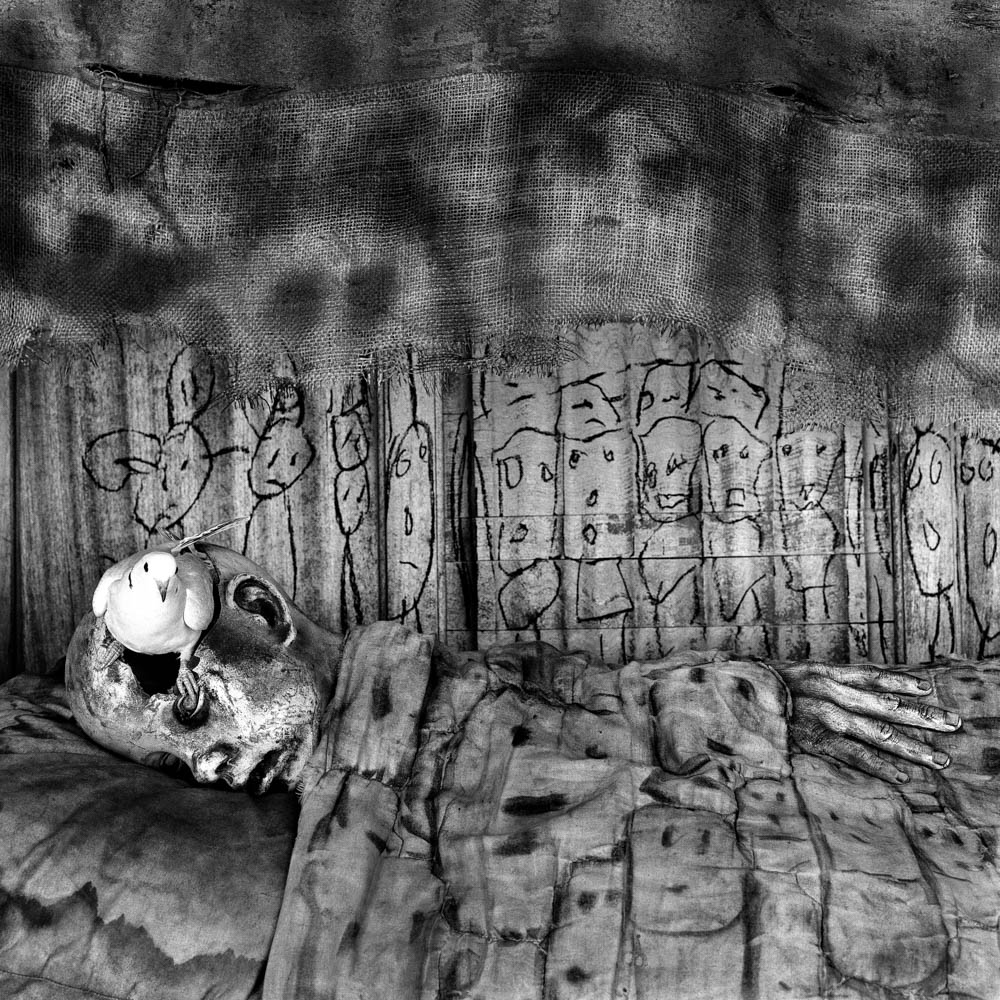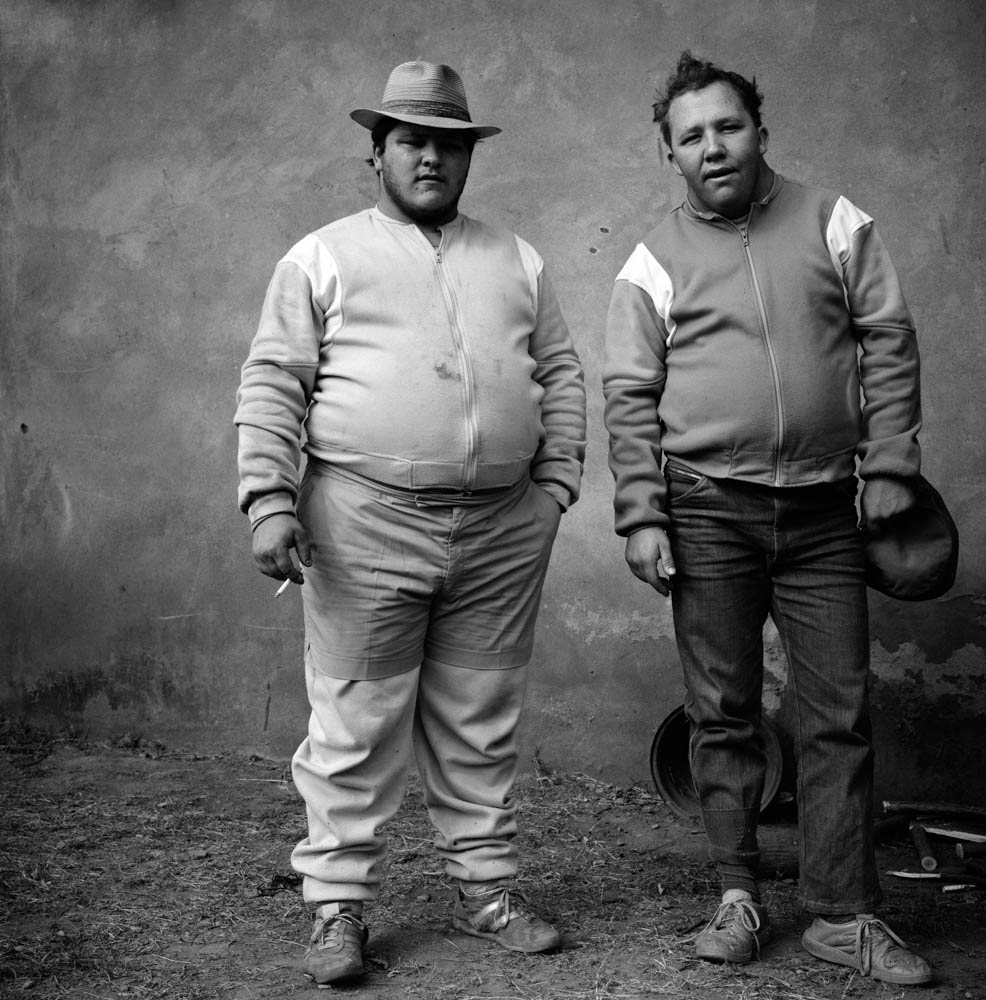TAKE A VISUAL JOURNEY THROUGH ROGER BALLEN’S BIOGRAPHY AND EVOLUTION OF STYLE.
A boy from Westchester, New York, turned wandering geologist, turned photographer of social outcasts — Roger Ballen’s biography is as fantastic as the portraits he’s captured over the past five decades.
 Deathbed, 2010
Deathbed, 2010
In 1968, Ballen’s parents gifted their recent high-school grad a Nikon FTn camera, which he used to document his surroundings in New York, and then later to capture America’s burgeoning counterculture and protest movements in the 1970s.
Even early on, Ballen’s photographs showcased what would become his trademark black-and-white film and focus on documentary.
Ballen hit his stride in the 1980s and 1990s while working as a geologist in Africa. While searching for mineral deposits, he came across closed-off communities of white Afrikaners in rural South Africa who took racial purity during apartheid to new extremes.
His provocative depictions of citizens in South Africa’s “dorps” and their dwellings were seen as a disturbing, yet intimate social critique.
 Johan and Bertie, Brothers, Western Transvaal 1987
Johan and Bertie, Brothers, Western Transvaal 1987
Throughout the late 1990s and into the 2000s, Ballen honed a style known as “documentary fiction,” in which those he’d photographed on the margins of South African society became his subjects in staged studio shoots outside of Johannesburg.
The result were dark, psychological images that played with onlookers’ conceptions of reality.
Over the past decade, Ballen has incorporated twisted sculptures, collage, paintings, mannequins and live animals into his shoots. He also collaborated in haunting multimedia projects with unexpected partners like freak-rap duo Die Antwoord.
At times improvised, at times staged, and sometimes not featuring humans at all, the current era of Ballen’s work combines all aspects of his repertoire for pointed takes on the human condition, he writes in a retrospective of his work book, titled Ballenesque.
“A central challenge in my career has been to locate the animal in the human being and the human being in the animal,” he says.
 Cut Loose, 2005
Cut Loose, 2005

Comments are closed.